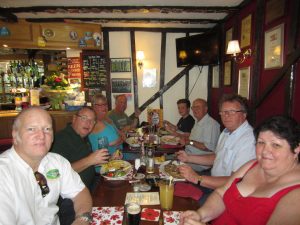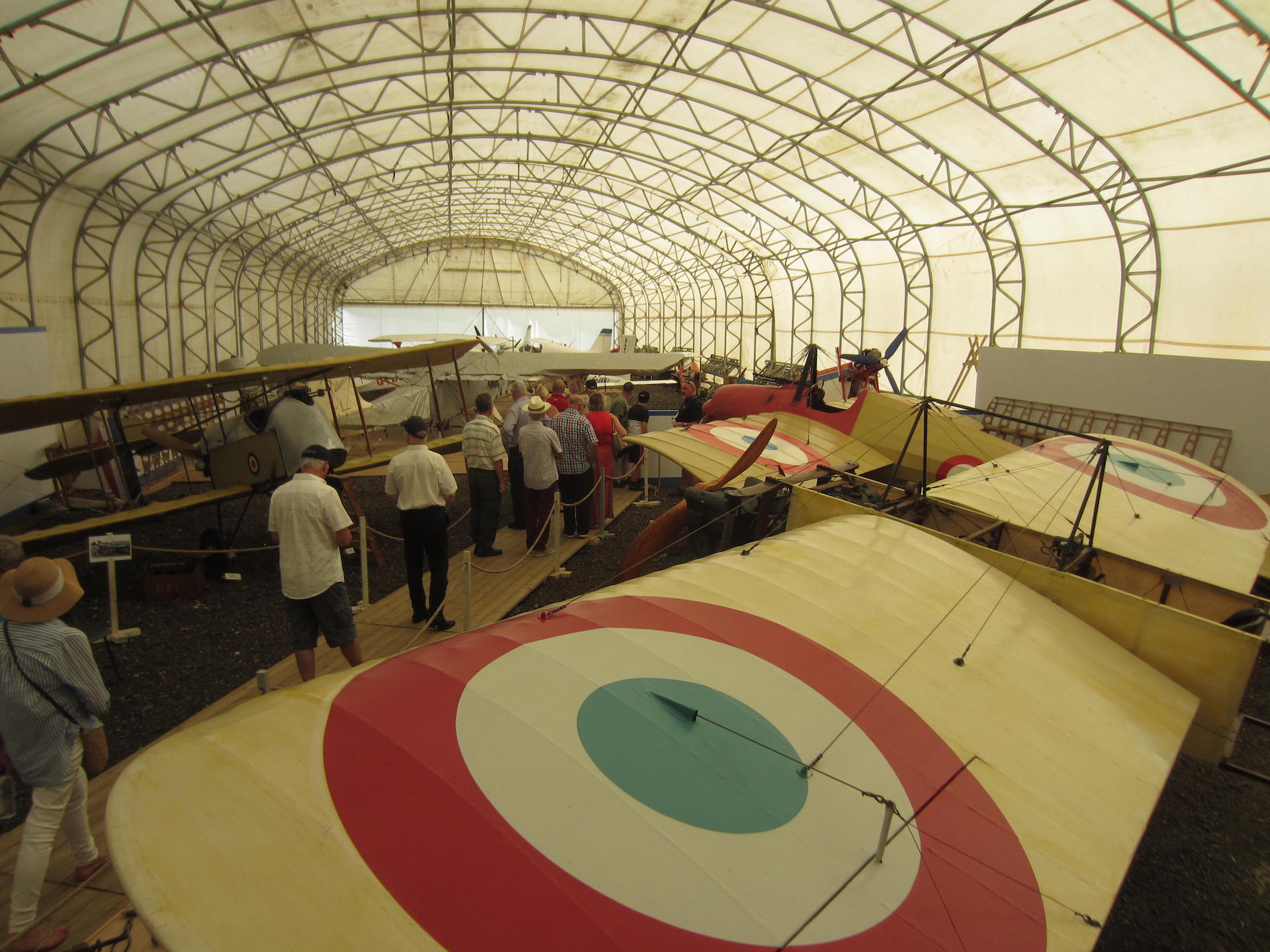We are in the middle of winter and it seems strange, thinking back, that our own ‘drive it day’ on 25 August was one of the hottest days of the year.
Early in the year, the committee had been looking at various options for the official Drive It Day, in April 2019. I came up with the idea of starting at the Museum of Power in Langford near Maldon. I knew that there was a great Sunday car meet every month there and April’s was due to take place on the Drive-It-Day Sunday. The museum does a splendid full breakfast which could set members up for the day. Looking for somewhere to drive to after breakfast, I thought the Stow Maries Great War Museum would be a good place to visit, after all our previous aircraft museum visits which had been popular with our members.
So, Drive-It Day was sorted. That was until I noticed that both the Porsche Club and the Charity Classic Vehicle Club had had the same idea. Our committee discussed the venues, and we agreed that the museums might be a bit too busy with the amount of cars that would be attending from all three car clubs at the same time. So, a different Drive-It-Day was arranged, and our visit to Stow Maries was postponed to 25 August.
 We had intended to organise a scenic driving route through the countryside between the two museums, but life doesn’t always go as planned. Stow Maries Museum said that they were only able to give us a guided tour at 11:30 am or 2:30 pm, and they couldn’t do any other time. So, we chose the 11:30 tour and had to drop the country drive.
We had intended to organise a scenic driving route through the countryside between the two museums, but life doesn’t always go as planned. Stow Maries Museum said that they were only able to give us a guided tour at 11:30 am or 2:30 pm, and they couldn’t do any other time. So, we chose the 11:30 tour and had to drop the country drive.
It was great to see over 25 cars (and one motorcycle) turn out for the day. We had a good meet at the Museum of Power. Many members went for the cooked breakfast, which we managed to eat in time for our departure to drive to the Stow Maries Great War Museum.
Stow Maries had told me that, due to health and safety concerns, we would not be able to park our cars in a line opposite the entrance building. However, on arrival they were rather impressed with our lovely collection of Jaguars and allowed us after all to park opposite the entrance building.
Our club has visited various aircraft museums, often concentrating mainly on aircraft from the second world war. It made an interesting change to visit a first world war airfield.
 Incidentally, we learned that the difference between airfield, aerodrome and airport is that an airfield is all grass, with planes taking off or landing anywhere on the field, and aerodrome has a paved runway and an airport also has commercial operations.
Incidentally, we learned that the difference between airfield, aerodrome and airport is that an airfield is all grass, with planes taking off or landing anywhere on the field, and aerodrome has a paved runway and an airport also has commercial operations.
 Our members were split into two groups and given a fascinating tour of nearly 90 minutes each. Stow Maries has the largest known surviving group of Royal Flying Corps buildings on a WW1 airfield, preserved because the airfield was not adapted after 1919 for further military use.
Our members were split into two groups and given a fascinating tour of nearly 90 minutes each. Stow Maries has the largest known surviving group of Royal Flying Corps buildings on a WW1 airfield, preserved because the airfield was not adapted after 1919 for further military use.
 Originally opened in 1916, as the home for B Flight of No 37(HD) Squadron, Royal Flying Corps, the airfield saw the birth of the air defence of Great Britain, in response to the first raids by Zeppelins and Gotha bombers on London and the South East. Stow Maries played a key role in the Battle for Britain (the first London Blitz) the following year. It was at Stow Maries, on 1 April 1918, that No 37 Squadron transitioned from the Royal Flying Corps to the Royal Air Force. It continued in its dedicated role until Spring 1919, when the RAF closed Stow Maries’ doors forever.
Originally opened in 1916, as the home for B Flight of No 37(HD) Squadron, Royal Flying Corps, the airfield saw the birth of the air defence of Great Britain, in response to the first raids by Zeppelins and Gotha bombers on London and the South East. Stow Maries played a key role in the Battle for Britain (the first London Blitz) the following year. It was at Stow Maries, on 1 April 1918, that No 37 Squadron transitioned from the Royal Flying Corps to the Royal Air Force. It continued in its dedicated role until Spring 1919, when the RAF closed Stow Maries’ doors forever.
 By the end of the tour we were all rather hot to say the least. Jackie Warren managed to keep cool with her hand-held battery fan. We had been walking around trying to stay in the shade where we could. It was time for a cold drink.
By the end of the tour we were all rather hot to say the least. Jackie Warren managed to keep cool with her hand-held battery fan. We had been walking around trying to stay in the shade where we could. It was time for a cold drink.
Many of our members drove the short distance to The Hurdlemakers Arms, in Woodham Mortimer. The pub has a large garden with plenty of tables inside and outside. Everyone seemed to enjoy their meals and the company of their fellow members.
Graham Cook



